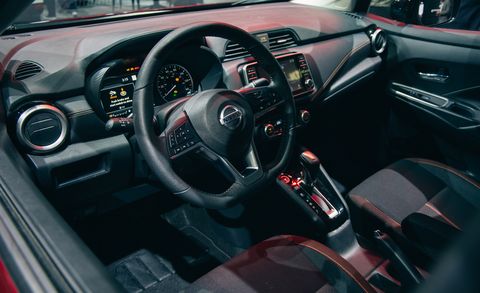Not only is the 2022 Nissan Versa, but it also has a price tag that’s affordable for almost everyone. While almost everyone will also find its four-cylinder engine to be ill-equipped for prompt highway passes, they should find its highway fuel economy to be impressive.
The Versa’s smooth ride and cushy front seats make it a relaxing chariot for daily commutes, and it’s available with more driver assists than its classmates. Although some of those alternatives are better to drive, the 2022 Versa is a very good little car for folks who care most about comfort and safety.
ENGINE AND IMPLEMENTATION
Every 2022 Nissan Versa is motivated by a 122-hp four-cylinder engine that powers the front wheels. A five-speed manual is the default transmission on base models, but a continuously variable automatic transmission (CVT) can be had on the S, too.
The latter comes standard on the higher SV and SR trim levels. While the Versa feels slow when pulling away from stoplights and during highway-passing situations, its CVT helps prevent coarse noises by mimicking actual gearchanges.
The Versa we drove had a smooth ride that isolated road imperfections. It also was much better to drive than the version it replaces, providing accurate steering feel and consistent brake-pedal feedback.
ENERGY AND REAL-WORLD MPG
The 2022 Nissan Versa is rated up to 32 mpg in the city and 40 mpg on the highway when equipped with the CVT. The entry-level Versa with the manual has significantly worse figures, with an estimated 27 mpg city and 35 highway.
We tested an automatic-equipped Versa on our 75-mph highway fuel-economy route, which is part of our extensive testing regimen, where it earned 40 mpg. For more information about Versa’s fuel economy, visit the EPA’s website.
INTERIOR, CONVENIENCE, AND BOOTH
The 2022 Nissan Versa‘s interior no longer looks and feels like a children’s play area. It uses nice materials throughout and has soft-touch surfaces on the doors and dashboard.
While Nissan doesn’t offer power-adjustable seats and leather upholstery here, the fanciest model can be had with heated front seats as well as a leather-wrapped steering wheel and shift knob.
The mid-level SV model unlocks some desirable standard features, such as a driver’s-seat-mounted armrest and a digital screen in the gauge cluster, while the top-tier Versa SR brings automatic climate control, passive hands-free entry, remote start, and more.
The back seat can comfortably fit two adults but both the Hyundai Accent and Kia Rio have more rear-seat headroom and legroom. The sedan has useful cubbies on its center console, and we managed to fit six carry-on suitcases in its trunk; 17 total with the back seat folded.
IN-VEHICLE INFOTAINMENT AND INTERCONNECTION
The Versa features a standard 7.0-inch touchscreen infotainment system with useful buttons and knobs. However, only the SV and SR trim levels have Apple CarPlay and Android Auto integration.
During our evaluation period, we found that the CarPlay interface responded better to our inputs than the car’s normal menus did. Every Versa has three USB ports and voice-command capability, but anyone who wants the ability to listen to SiriusXM satellite radio will have to look higher than the base model.
PROTECTION AND DRIVER-ASSISTANCE ASPECTS
The Nissan sedan comes with a lot of standard driver-assistance technology, including automatic high-beams and lane-departure warning. For more information about the Versa’s crash-test results, visit the National Highway Traffic Safety Administration (NHTSA) and Insurance Institute for Highway Safety (IIHS) websites.
PHOTOS






